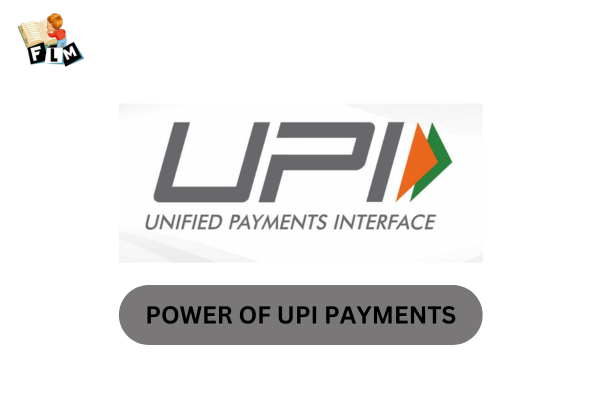Introduction
UPI refers to Unified Payments Interface, developed by National Payments Corporation of India (NPCI) in 2016 and established by the Reserve Bank of India (RBI) and Indian Banks Association (IBA).
This interface facilitates person to person transaction(P2P) and person to merchant transaction(P2M). It is used on cell phones to transfer money instantly between two bank accounts. The mobile number of the device must be registered with the bank. The money can be transferred to the recipient’s UPI ID.
It is an open source application programming interface (API) based on the Immediate Payment Service (IMPS) and managed by the Reserve Bank of India. On August 25, 2016, Indian banks published their UPI-enabled apps on Google Play.
History:
The National Payments Corporation of India set up in April 2009 aiming to standardize and streamline the payments system in India. In 2011, the Reserve Bank of India stated that more efficient, inclusive and secure strategies are needed as cashless payments are limited and many households do not have access to banking services.
The RBI 2014 vision aimed at creating a secure payment system and the Unified Payment Interface (UPI) was launched. The UPI quickly became a groundbreaking financial innovation, enabling secure real-time transactions through user-friendly mobile application. The success of UPI in 2019 also generated global interest from the U.S. the Federal Reserve.
The growth of UPI made India a world leader in real-time payments, with over 25.5 billion transactions by 2020. Subsequent developments such as the increase in transaction limits and new payment methods, particularly in non-metropolitan areas, have increased acceptance again and the UPI model is now being considered by many countries worldwide.
UPI 2.0
Launched on August 16, 2018 offers features like linking of overdraft accounts, pre-authorization of transactions, collection of invoices, autopay for recurring payments etc. By August 2021, major banks have adopted UPI autopay, from March 2022, debit for UPI registration. There was no need to use a card. RBI had Rupee credit cards linked to UPI by June 2022, reducing the opening time.
In September 2022, UPI was upgraded for common transactions and investments. In April 2023, RBI introduced pre-approved bank lines for UPI loans, RazorPay introduced faster cash back by 2024. Hitachi is developing UPI-based recycling. ICICI Bank now allows non-resident Indians in ten countries to make UPI payments using international mobile numbers.
The Rise of UPI Payments
UPI transactions have grown to 8,375 crore from 92 crore in FY 2017-18, in FY 2022-23 at a compound annual growth rate of 147 per cent in terms of volume. Similarly, the value of UPI transactions has grown from ₹ 1 lakh crore in FY 2017-18 to ₹ 139 lakh crore in FY 2022-23 at a compound annual growth rate of 168 per cent.
UPI has recorded 8,572 crore transactions during the current financial year up to 11th December, 2023. It has been the major driving force behind the overall growth of digital payment transactions in the country and accounted for 62 per cent of digital payment transactions in FY 2022-23. The Year-on-Year growth in the value of bank notes in circulation has come down from 9.9 per cent in FY 2021-22 to 7.8 per cent in FY 2022-23.
How UPI Works?
- The UPI enables users to link multiple bank accounts to a single mobile app and make transactions using a unique UPI ID.
- By entering the recipient’s UPI ID, the amount and the secure PIN, funds are immediately transferred between accounts without the need to provide bank details.
- UPI operates 24/7, ensuring quick, secure and convenient digital transactions.
Services Provided by UPI
There are several basic features offered by UPI. Users can access the money sent and received and also the rest of the transaction history. To send money, users need an account number, an Indian Financial System code (or IFSC, which is an alphanumeric code that facilitates sending money abroad), a recipient’s mobile number, a virtual-ID or Aadhaar number (similar to Social) and a security number required).
- Instant money transfer: UPI allows user to transfer money at any time between bank accounts.
- Multiple bank accounts: Users can link multiple bank account with a single UPI ID.
- Bill payments: UPI supports users to pay all their credit card bills, electricity bills and other recurring bills.
- Merchant Payments: UPI allows for seamless P2M transactions, making it easy to pay for goods and services.
- Invoice attachment: User can check all their transactions in a clear record format.
- Autopay: UPI allows automatic payments for recurring transactions, such as subscriptions, insurance premiums and more.
Advantages of UPI for Business Owners
- Enhanced customer convenience: UPI allows customers to make payments straight from their bank accounts, doing away with the necessity for cash or card transactions. This improves the overall payment experience for customers.
- Fast resolution: UPI enables merchants to receive immediate payments through real-time fund transfers. This enhances income and cuts down on repair waiting times.
- Reduced costs: UPI services typically have lower transaction fees compared to payment options like credit cards. This enables merchants to reduce transaction fees, particularly for expensive items.
- Broader range of customers: UPI is now available to a larger number of customers as more banks and payment service providers start to support it. Retailers have the opportunity to access a larger customer base and draw in clients from financial institutions.
- Improved business understanding: UPI communication offers thorough transaction data for merchants to study customer behaviour, monitor sales trends, and make informed business choices. This data-driven strategy can assist businesses in enhancing customer interactions.
- Encourages Digital Economy: Merchants support digital economy transformation and government policies by accepting UPI payments.
Advantages of UPI for User
- Simple and Convenient: UPI offers an easy and user-friendly platform for conducting transactions. Customers have the option to easily transfer funds by using their smartphones, removing the necessity for cash or card transactions.
- Secure transactions: UPI transactions are protected by multi-factor authentication and encryption to ensure the security of customer’s financial data. This contributes to establishing trust and minimizing the chances of fraud.
- Wide acceptance: UPI is accepted by a large number of merchants, both online and offline. Customers can use UPI for payments at various establishments including retail stores, e-commerce platforms, utility bill payments, and more.
- Transaction history: UPI offers customers both a transaction history and immediate notifications for successful transactions.
UPI Transaction Limit
The current transaction limit for regular UPI transactions is fixed at 1 lakh per transaction. However, for certain categories such as capital markets, fundraising, insurance, overseas geographical remittances, etc., the purchase limit has been increased to 2 lakhs per transaction.
The RBI has recently stated that the transaction limit for UPI payments to hospitals and educational institutions has been raised. From December 8, 2023, the payment transaction limit has increased from Rs 1 lakh to Rs 5 lakh per transaction. This improvement is designed to make it easier to conduct bigger transactions in these industries.
UPI Transactions Charges
The transaction charges will vary for different banks or payment services. In general, neither the sender nor the recipient is charged for a UPI transaction. However, charges may be levied by the banks or service providers for special services or other services related to UPI. Detailed information on the charges levied for UPI services can therefore be obtained from your bank or payment service provider.
List of Major UPI apps and their Respective Sponsor Banks
| PhonePe | YES bank, ICICI bank, AXIS bank |
| Google pay | Axis, HDFC,SBI, ICICI |
| Paytm | ICICI |
| ICICI | |
| Amazon pay | AXIS |
| Airtel payment banks | Kotak Mahindra Bank |
| Bharat Interface for Money (BHIM) | National Payments Corporation of India |

What is KYC?
Know Your Customer (KYC) is a key feature used by financial institutions to verify the authenticity of their customers. This will ensure the prevention of fraud, money laundering, and other crimes that require only basic personal information such as name, address, date of birth and birth verification, and state-issued ID.
KYC is essential for opening bank accounts, investing in financial products, accessing various services and ensuring compliance with anti-money laundering (AML), counterterrorism and financial (CTF) regulations. The process may require periodic updates and additional testing for high-risk patients. Although important for security, KYC can provide some administrative services to clients.
Conclusion
UPI payments provide a fast, secure and convenient way to manage transactions through smartphones. By connecting various bank accounts to one UPI ID, users can easily transfer funds, pay bills and make purchases digitally. People widely accept and prefer UPI for financial transactions.




